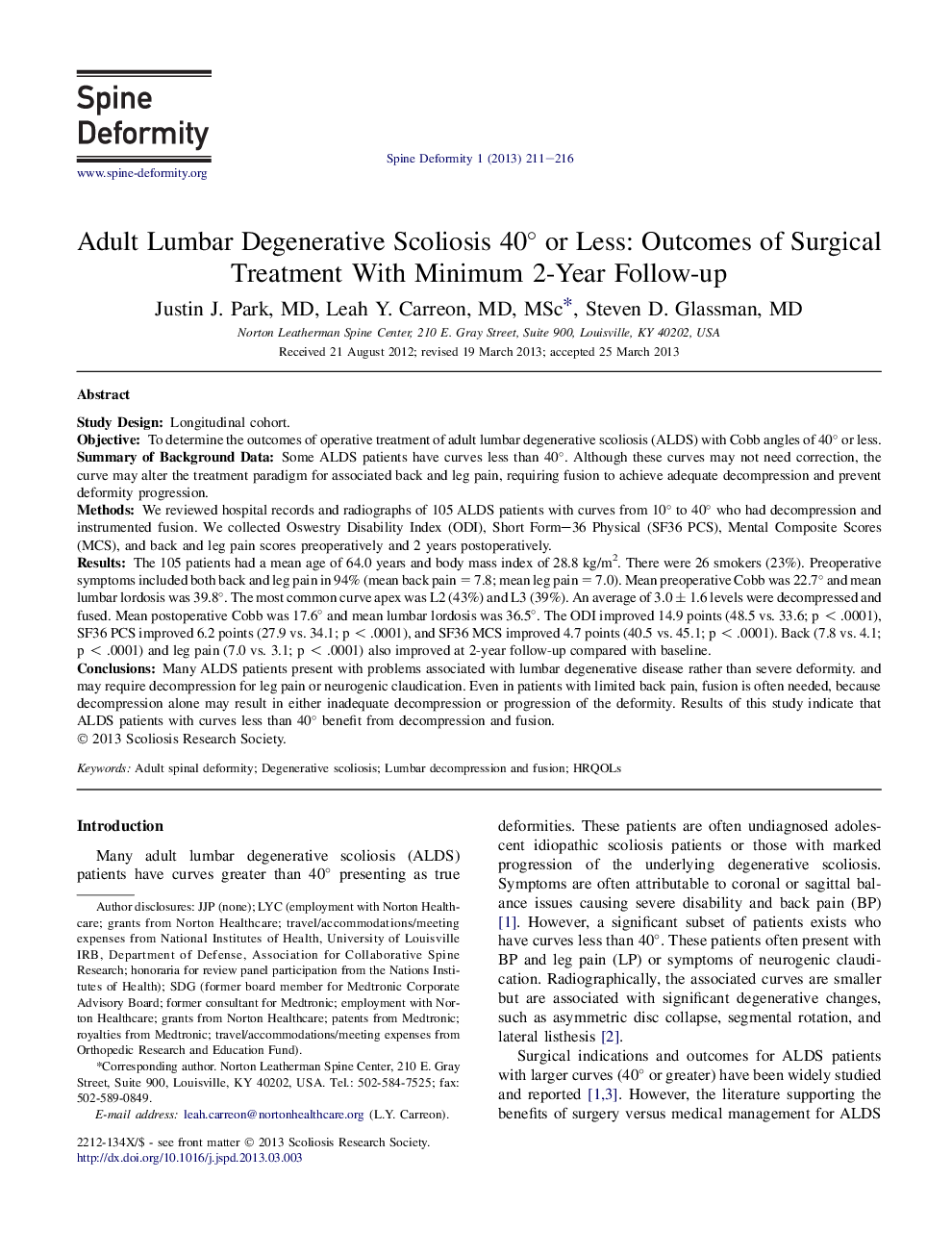| کد مقاله | کد نشریه | سال انتشار | مقاله انگلیسی | نسخه تمام متن |
|---|---|---|---|---|
| 4095707 | 1268545 | 2013 | 6 صفحه PDF | دانلود رایگان |

Study DesignLongitudinal cohort.ObjectiveTo determine the outcomes of operative treatment of adult lumbar degenerative scoliosis (ALDS) with Cobb angles of 40° or less.Summary of Background DataSome ALDS patients have curves less than 40°. Although these curves may not need correction, the curve may alter the treatment paradigm for associated back and leg pain, requiring fusion to achieve adequate decompression and prevent deformity progression.MethodsWe reviewed hospital records and radiographs of 105 ALDS patients with curves from 10° to 40° who had decompression and instrumented fusion. We collected Oswestry Disability Index (ODI), Short Form–36 Physical (SF36 PCS), Mental Composite Scores (MCS), and back and leg pain scores preoperatively and 2 years postoperatively.ResultsThe 105 patients had a mean age of 64.0 years and body mass index of 28.8 kg/m2. There were 26 smokers (23%). Preoperative symptoms included both back and leg pain in 94% (mean back pain = 7.8; mean leg pain = 7.0). Mean preoperative Cobb was 22.7° and mean lumbar lordosis was 39.8°. The most common curve apex was L2 (43%) and L3 (39%). An average of 3.0 ± 1.6 levels were decompressed and fused. Mean postoperative Cobb was 17.6° and mean lumbar lordosis was 36.5°. The ODI improved 14.9 points (48.5 vs. 33.6; p < .0001), SF36 PCS improved 6.2 points (27.9 vs. 34.1; p < .0001), and SF36 MCS improved 4.7 points (40.5 vs. 45.1; p < .0001). Back (7.8 vs. 4.1; p < .0001) and leg pain (7.0 vs. 3.1; p < .0001) also improved at 2-year follow-up compared with baseline.ConclusionsMany ALDS patients present with problems associated with lumbar degenerative disease rather than severe deformity. and may require decompression for leg pain or neurogenic claudication. Even in patients with limited back pain, fusion is often needed, because decompression alone may result in either inadequate decompression or progression of the deformity. Results of this study indicate that ALDS patients with curves less than 40° benefit from decompression and fusion.
Journal: Spine Deformity - Volume 1, Issue 3, May 2013, Pages 211–216